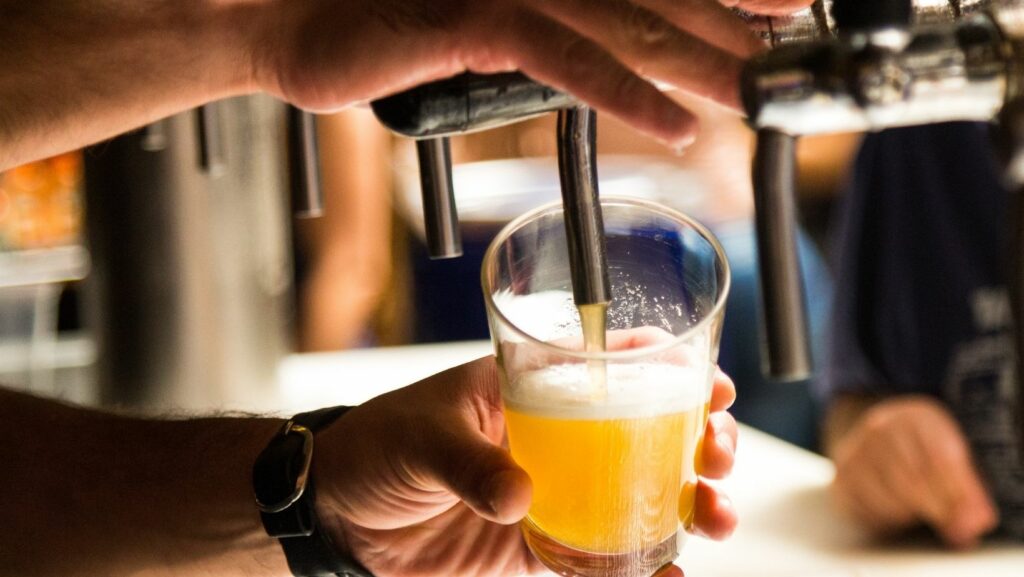 Crafting the perfect beer experience goes beyond just a cold brew in hand. From glassware to tasting techniques, mastering the art of beer appreciation requires a few key essentials. Whether you’re a seasoned beer enthusiast or just dipping your toes into the world of craft brews, having the right tools can elevate your drinking experience to new heights. Understanding the importance of selecting the right glass for different beer styles, honing your tasting skills, and even exploring the world of beer pairings are all part of the essentials that every beer lover should have in their arsenal. By delving into the nuances of beer essentials, you can unlock a whole new level of enjoyment and appreciation for the diverse flavors and aromas that each brew has to offer.
Crafting the perfect beer experience goes beyond just a cold brew in hand. From glassware to tasting techniques, mastering the art of beer appreciation requires a few key essentials. Whether you’re a seasoned beer enthusiast or just dipping your toes into the world of craft brews, having the right tools can elevate your drinking experience to new heights. Understanding the importance of selecting the right glass for different beer styles, honing your tasting skills, and even exploring the world of beer pairings are all part of the essentials that every beer lover should have in their arsenal. By delving into the nuances of beer essentials, you can unlock a whole new level of enjoyment and appreciation for the diverse flavors and aromas that each brew has to offer.
Beer Essentials
 Selecting the right glassware is crucial to enhancing the beer drinking experience. Different beer styles require specific types of glasses to optimize their flavors and aromas. For example, a tulip glass is ideal for capturing the complexities of Belgian ales, while a pint glass is perfect for enjoying a refreshing lager or ale. By using the appropriate glassware, enthusiasts can elevate their enjoyment of various beer varieties and appreciate their distinct characteristics fully. Developing tasting skills is essential for anyone looking to fully experience the nuances of different beers. Understanding how to evaluate appearance, aroma, flavor, and mouthfeel can significantly enhance the tasting experience.
Selecting the right glassware is crucial to enhancing the beer drinking experience. Different beer styles require specific types of glasses to optimize their flavors and aromas. For example, a tulip glass is ideal for capturing the complexities of Belgian ales, while a pint glass is perfect for enjoying a refreshing lager or ale. By using the appropriate glassware, enthusiasts can elevate their enjoyment of various beer varieties and appreciate their distinct characteristics fully. Developing tasting skills is essential for anyone looking to fully experience the nuances of different beers. Understanding how to evaluate appearance, aroma, flavor, and mouthfeel can significantly enhance the tasting experience.
Understanding Beer Styles
 Beer styles play a crucial role in the overall drinking experience, influencing the flavors, aromas, and even the glassware used. Understanding the distinction between various beer styles is essential for selecting the perfect brew to suit individual preferences. Ales and lagers represent the two primary categories of beer, distinguished mainly by the type of yeast and fermentation process. Ales are fermented at warmer temperatures using top-fermenting yeast, resulting in a bolder flavor profile with fruity and complex undertones. On the other hand, lagers are fermented at cooler temperatures with bottom-fermenting yeast, yielding a cleaner and crisper taste.
Beer styles play a crucial role in the overall drinking experience, influencing the flavors, aromas, and even the glassware used. Understanding the distinction between various beer styles is essential for selecting the perfect brew to suit individual preferences. Ales and lagers represent the two primary categories of beer, distinguished mainly by the type of yeast and fermentation process. Ales are fermented at warmer temperatures using top-fermenting yeast, resulting in a bolder flavor profile with fruity and complex undertones. On the other hand, lagers are fermented at cooler temperatures with bottom-fermenting yeast, yielding a cleaner and crisper taste.
Brewing Process Demystified
Understanding the brewing process is fundamental for those seeking to appreciate the art and science behind crafting a perfect brew. Beer production involves a series of carefully orchestrated steps that contribute to the complex flavors and characteristics of the final product. From mashing and lautering to fermentation and conditioning, each stage plays a crucial role in shaping the beer we enjoy.
- Mashing: During mashing, malted grains are mixed with hot water to activate enzymes that break down starches into fermentable sugars. This process creates a sweet liquid known as wort, which serves as the foundation for the beer.
- Lautering: Following mashing, the wort is separated from the solid grain material through a process called lautering. This step ensures that only the liquid components are retained for further processing, leaving behind any residual solids.
- Boiling and Hopping: The wort is then transferred to a brew kettle, where it is boiled and hops are added. Boiling helps sterilize the liquid, while hops contribute bitterness, flavor, and aroma to the beer, balancing the sweetness of the malt.
- Fermentation: Once the wort is cooled, yeast is added to initiate fermentation. Yeast converts the sugars in the wort into alcohol and carbon dioxide, creating alcohol and imparting distinctive flavors to the beer.
- Conditioning: After primary fermentation, the beer undergoes conditioning, where it is aged to allow flavors to mature and mellow. This step helps refine the beer’s taste profile and ensures a well-balanced final product.
By unraveling the brewing process, beer enthusiasts can gain a deeper appreciation for the craftsmanship and expertise required to produce a diverse range of beer styles. From the selection of ingredients to the precise control of fermentation temperatures, every aspect of brewing contributes to the complexity and character of the brew in your glass.

